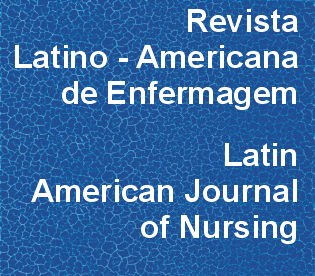Adverse events related to the use of peripheral intravenous catheters in children according to dressing regimens
DOI:
https://doi.org/10.1590/S0104-11692008000300005Keywords:
pediatric nursing, catheterization peripheral, infusions intravenous^i1^sadverse effeAbstract
A randomized, controlled study was implemented to verify reasons to release and adverse events related to the use of peripheral intravenous catheters in children, according to the dressing regimens The sample was set at 150 peripheral intravenous catheters, randomly assigned to three groups: sterile gauze dressings, sterilized transparent film dressings, and non sterile hypoallergenic adhesive tape. The data was collected after consent had been obtained by the Ethics Committee, including children who had been submitted to catheterization with Teflon® over the needle catheters. Statistical tests were performed by applying the Pearson Chi-square test, significance level set at p < 0.05. The results showed that dressing regimens influenced the reasons for catheter removal and occurrence of adverse events, mainly due to infiltration (55.3%). The Sterile gauze showed the best performance (p=0.002) in comparison with the other studied groups, once 40.0% of the catheters were removed by release from treatment.Downloads
Download data is not yet available.
Downloads
Published
2008-06-01
Issue
Section
Original Articles
License
RLAE’s authorship concept is based on the substantial contribution by each of the individuals listed as authors, mainly in terms of conceiving and planning the research project, collecting or analyzing and interpreting data, writing and critical review. Indication of authors’ names under the article title is limited to six. If more, authors are listed on the online submission form under Acknowledgements. The possibility of including more than six authors will only be examined on multicenter studies, considering the explanations presented by the authors.Including names of authors whose contribution does not fit into the above criteria cannot be justified. Those names can be included in the Acknowledgements section.
Authors are fully responsible for the concepts disseminated in their manuscripts, which do not necessarily reflect the editors’ and editorial board’s opinion.
How to Cite
Adverse events related to the use of peripheral intravenous catheters in children according to dressing regimens. (2008). Revista Latino-Americana De Enfermagem, 16(3), 362-367. https://doi.org/10.1590/S0104-11692008000300005



